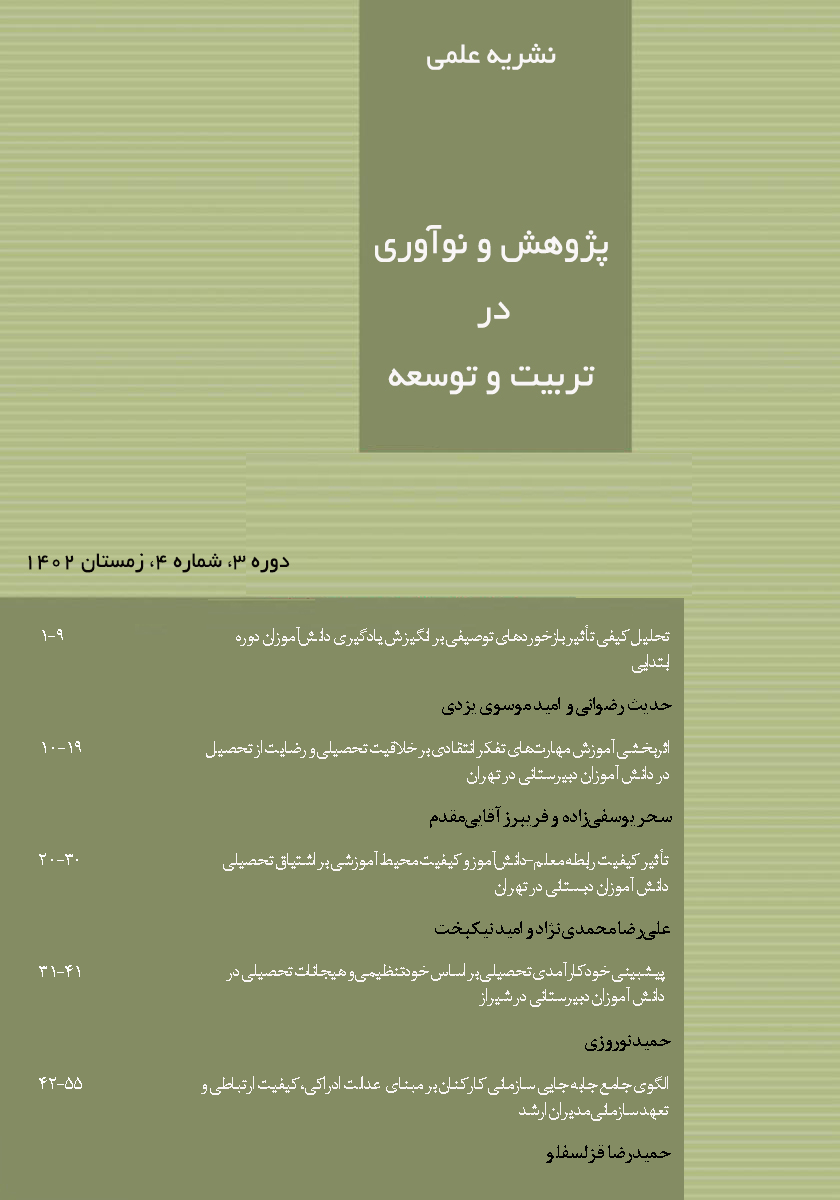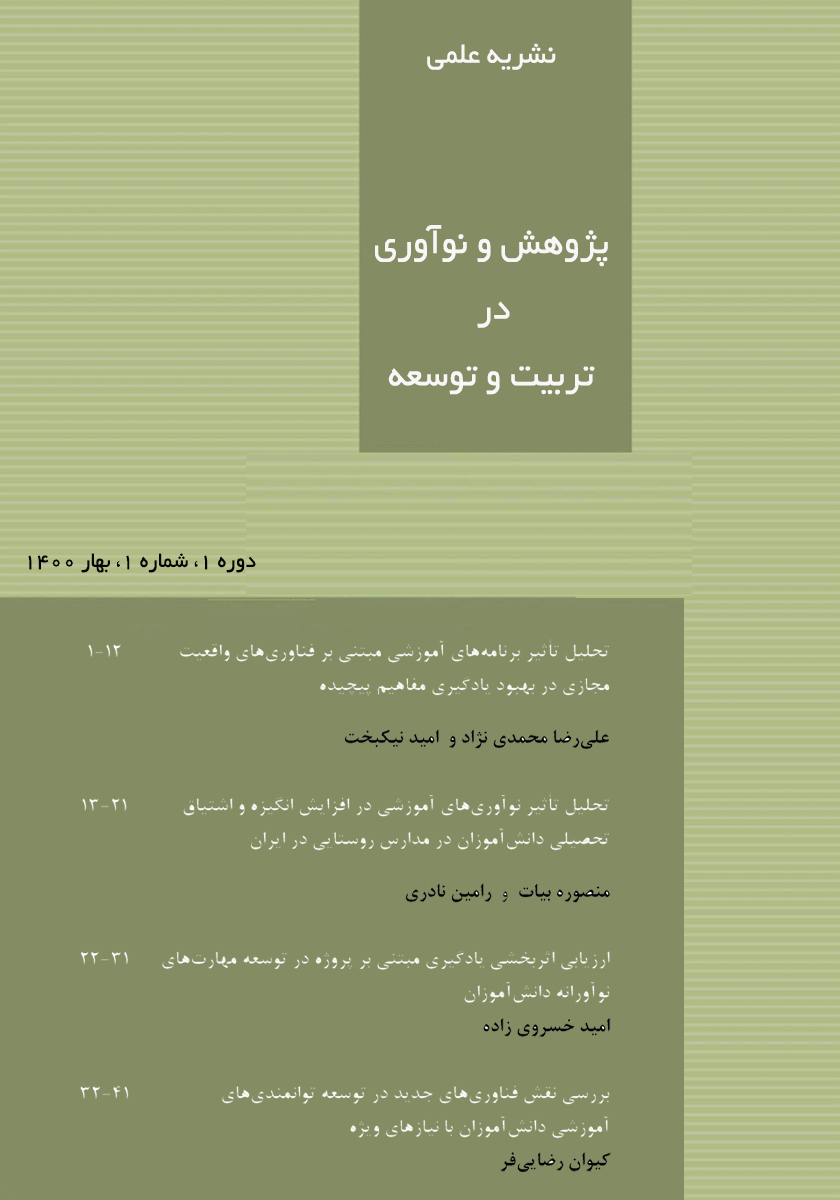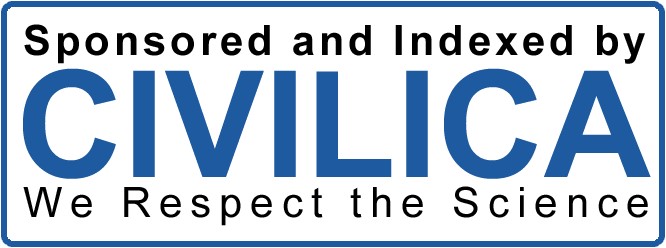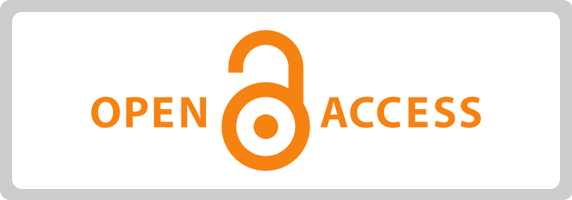ارائه مدل ساختاری عوامل موثر بر سازگاری دانشآموزان دختر با محیط مدرسه و مقایسه آن با مدل پسران
کلمات کلیدی:
مدل معادلات ساختاري, سازگاري با محیط مدرسه, اهداف پیشرفت, راهبردهاي خودنظم بخشیچکیده
پژوهش حاضر از یکسو با هدف ارائه مدل عوامل موثر بر سازگاری دانش آموزان در محیط مدرسه و از سوی دیگر، مقایسه این مدل در بین دانش آموزان دختر و پسرانجام شده است. روش تحقیق همبستگی و جامعه آماری آن را کلیه دانش آموزان مقطع متوسطه دوم شهر داراب تشکیل دادند نمونه پژوهش با استفاده از جدول نمونه گیری مورگان و روش طبقهای نسبی انتخاب شده است ضمن اینکه برای اندازه گیری سازگاری دانش آموزان با محیط مدرسه، از پرسشنامه بیكر و سریاك (1989)، راهبردهای خودنظم بخشی از مقیاس میلر و براون (1999) و جهت گیری هدفی از پرسشنامه میدگلی و همكاران(1998) استفاده شده است. دادهها از طریق مدل معادلات ساختاری و آزمون تی گروههای مستقل بررسی و نتایج نشان میدهد که اثر مستقیم جهت گیری هدفی(372/0) و راهبردهای خودنظم بخشی(323/0) بر سازگاری دانش آموزان دختر با محیط مدرسه در سطح (01/0=p) و اثر مستقیم جهت گیری هدفی بر راهبردهای خودنظم بخشی(547/0) از نظر آماری معنی دار است نتایج ازمون تی گروههای مستقل نشان داده است که بین جنسیت دانش آموزان و نمره کلی پرسشنامه سازگاری دانش آموزان با محیط مدرسه تفاوت معناداری وجود دارد (203/2=T) علاوه بر این میانگین سازگاری دانش آموزان دختر با محیط مدرسه (23/107)، به صورت معناداری بیشتر از دانش آموزان پسر(14/96) است. جهت گیری هدفی و راهبردهای خودنظم بخشی تأثیر مثبت و معنی داری بر سازگاری دانش آموزان با محیط مدرسه دارد در مولفه سازگاری اجتماعی دانش آموزان پسر نسبت به دختران از مهارتهای اجتماعی و بین فردی بهتری برخوردارند اما سازگاری تحصیلی دختران بیشتر از پسران است همچنین در مولفههای راهبردهای خودنظم بخشی نظیر پذیرش و اجرا، پسران نسبت به دختران از عملکرد بهتری برخوردارند اما در مولفه برنامه ریزی، دختران نسبت به پسران برتری دارند.
دانلودها
مراجع
Abdollahi, R., & Rowli Zadeh Tabatabaei, K. (2013). The Impact of Computer Games on the Personality Characteristics and
Adjustment of Adolescents. Bi-Annual Journal of Women's Police Studies, 7(18), 106-184.
Ajam, A. A., Jafari Thani, H., Mehram, B., & Ahanchian, M. (2012). The Role of Self-Regulated Learning Strategies, Computer
Skills, and Academic Achievement in Students' Views Toward Synchronous and Asynchronous Interaction in Blended
Learning Approaches. Curriculum Planning Research, 9(34), 17-11.
Alagheband, A. (2002). Introduction to Educational Management. Ravan Publishing.
Ames, C. (1992). Classrooms: Goals, structures and student Motivation. Journal of Educational Psychology, 84, 261-271.
https://doi.org/10.1037/0022-0663.84.3.261
Ardalan, E., & Hossein Chari, M. (2010). Predicting Academic Adjustment Based on Communication Skills with the Mediation
of Self-Efficacy Beliefs. Educational Psychology Quarterly, 6(17), 28-21.
Atarodi, M., & Karshki, H. (2013). The Role of Perfectionism Dimensions and Goal Orientation in Predicting Students' SelfRegulation. Applied Psychology Research, 14(2), 109-101.
Bahrami, N., & Bahrami, Y. (2012). The Relationship Between Self-Regulation and Adjustment (Emotional, Social, and
Educational) Among Internet Users and Non-Users in Students.
Gonida, E. N., Voulala, K., & Kiosseoglou, G. (2009). Students' achievement goal orientations and their behavioral and
emotional engagement: Co-examining the role of perceived school goal structures and parent goals during adolescence.
Learning and Individual Differences, 19, 53-60. https://doi.org/10.1016/j.lindif.2008.04.002
Habibah, E., Nooreen, N., & Rahil, H. M. (2010). Achievement Motivation and Self-Efficacy in Relation to Adjustment among
University Students. Journal Of Social Sciences, 6(3), 333-339. https://doi.org/10.3844/jssp.2010.333.339
Haji Shamsaei, M., Karshki, M., & Amini Yazdi, S. A. (2013). The Role of Self-Regulation in Academic Adjustment of Male
and Female Students. Research in Educational Systems, 7(21), 17-11.
Hossein Chari, M., & Dehghani, Y. (2008). Predicting Academic Procrastination Based on Self-Regulated Learning Strategies.
Research in Educational Systems, 2(4), 75-63.
Jarvela, S., & Jarvenoja, H. (2011). Socially constructed self-regulated learning and motivation regulation in collaborative
learning groups. Teachers College Record, 113(2), 350-374. https://doi.org/10.1177/016146811111300205
Jokar, B. (2005). The Relationship Between Goal Orientation and Self-Regulation Among Students of Various Fields at Shiraz
University. Journal of Social Sciences and Humanities, Shiraz University, 22(4), 71-56.
Kadivar, P., Jowadi, M. J., & Sajadian, F. (2010). The Relationship Between Thinking Style, Self-Regulation, and Achievement
Motivation. Psychological Research, 2(6), 43-30.
Kajbaf, M. B., Moulavi, H., & Shirazi Tehrani, A. (2003). The Relationship Between Motivational Beliefs, Self-Regulated
Learning Strategies, and Academic Performance Among High School Students. Cognitive Science Updates, 5(1).
Kaplan, A., & Flum, H. (2010). Achievement goal orientations and identity formation styles. Educational Research Review,
(1), 50-67. https://doi.org/10.1016/j.edurev.2009.06.004
Karimi, R. (2002). A Study and Comparison of Academic Adjustment Levels in Male and Female Students in Physical Education
and Sports Sciences at Razi University [Master's Thesis, Razi University of Kermanshah.
Karshki, H. (2008). The Role of Achievement Goals in Components of Self-Regulated Learning. Cognitive Science Updates,
(3), 21-13.
Khadami, M., & Noshadi, N. (2006). The Relationship Between Goal Orientation, Self-Regulated Learning, and Academic
Achievement Among Pre-University Students in Shiraz. Journal of Social Sciences and Humanities, Shiraz University,
(4), 78-63.
Khodadadi, M. (2008). The Relationship Between Problem-Solving Skills and Adjustment Among First-Year High School
Students in Bashagard Region Islamic Azad University of Marvdasht].
Khormaei, F., Fasihani, S., & Azadi Dehbidi, F. (2018). Predicting Academic Adjustment Based on Learning Styles and
Academic Self-Regulation. Journal of Psychology Growth, 7(3), 111-128.
Kord, B., Pasha Sharifi, H., & Mirhashemi, M. (2013). The Role of Goal Orientation and Self-Regulation in Predicting Students'
Academic Performance. Iranian Journal of Medical Education, 13(10), 829-820.
Lubker, J. R. (2006). College adjustment experiences of first-year students: Retired athletes, non-athletes, and current varsity
athletes [Ph.D. Thesis, West Virginia University.
Mikaeili Mani, F. (2011). The Relationship Between Identity Styles, Identity Commitment, and Gender with Students'
University Adjustment. Psychological Studies Quarterly, 6(2), 74-51.
Mikaeili Mani, F., Fathi Gouna, S. M., & Zandi, K. (2015). An Analysis of the Relationships Between Hope, Self-Efficacy,
Motivation, and Stressors with Academic Adjustment Among Master's Students at Urmia University. New Educational
Thoughts Quarterly, 11(41), 78-57.
Rahbar Karbasdehi, F., Hossein Khan Zadeh, A. A., & Abolghasemi, A. (2018). The Effect of Self-Regulation Strategies on
Academic Self-Efficacy and Reading Performance in Dyslexic Students. Scientific-Research Quarterly of Family and
Research, 15(4), 49-66.
Rastegar, A. (2006). The Relationship Between Intelligence Beliefs and Academic Achievement With Mediating Role of
Achievement Goals and Academic Engagement University of Tehran].
Rezapur Mirsaleh, Y., Esmail Beigi Mahani, M., Fakarian Arani, S., & Khodaei, R. (2018). The Mediating Role of SelfRegulated Learning in the Relationship Between the Quality of Academic Consultation and Academic-Career Uncertainty
in High School Students. Scientific-Research Quarterly of Counseling Studies, 17(65), 30-47.
Robbins, S. B., Lauver, K., Le, H., Davis, D., Langley, R., & Carlstrom, A. (2004). Do psychological and study skill factors
predict college outcome? A meta-analysis. Psychological bulletin, 130, 261-288. https://doi.org/10.1037/0033-
130.2.261
Rostami, S., & Fouladchang, M. (2018). Examining the Causal Model of the Relationship Between Parental Emotional
Perspective and Academic Adjustment with the Mediation of Self-Differentiation. Educational Research Journal, 5(36),
-39.
Safavi, M., Mousavi Lotfi, M., & Lotfi, R. (2009). The Relationship Between Emotional Intelligence and Emotional and Social
Adjustment in Pre-University Female Students in Tehran. Journal of Research, Shahid Beheshti University of Medical
Sciences, 14(5), 261-255.
Samadi, M. (2004). Self-Regulated Learning in Students and Parents: A Study on the Role of Gender and Academic
Performance. Journal of Psychology and Educational Sciences, 34(1), 175-157.
Sanobar, A. (2018). The Relationship Between Happiness, Resilience, and Academic Self-Efficacy with Academic Adjustment
in Tenth Grade Boys. 1(8), 1-15.
Scheer, J. R., Clark, K. A., McConocha, E., Wang, K., & Pachankis, J. E. (2023). Toward Cognitive-Behavioral Therapy for
Sexual Minority Women: Voices From Stakeholders and Community Members. Cognitive and Behavioral Practice, 30(3),
-494. https://doi.org/10.1016/j.cbpra.2022.02.019
Schunk, D. H., Pintrich, P. R., & Meece, J. L. (2008). Motivation in education: theory, research, and applications (3rd ed.).
Pearson/Merrill Prentice Hall.
Sediqi Erfaei, F., Tamanaei Far, M., & Mansouri Nik, A. (2011). The Relationship Between Body Image, Adjustment, and
Academic Achievement in High School Students. Educational Innovations Quarterly, 9(38), 66-51.
Seif, A. A. (2013). Modern Educational Psychology: Learning and Teaching Psychology. Agah Publishing.
Talebi, S. (2008). The Relationship Between Academic Self-Efficacy and Academic Achievement with Emphasis on Behavioral,
Cognitive, and Motivational Engagement Among Students of Payame Noor University of Fars Province.
Vakili, R., Gholamali Lavasani, M., Hejazi, B., & Ejei, J. (2009). Learning Strategies, Goal Orientations, and Test Anxiety in
Blind Students. Research in the Field of Exceptional Children, 10(1).
Wolters, C. A. (2003). Regulation of motivation: Evaluating an underemphasized aspect of self-regulated learning. Educational
Psychologist, 38, 189-205. https://doi.org/10.1207/S15326985EP3804_1
Wolters, C. A. (2011). Regulation of motivation: Contextual and social aspects. Teachers College Record, 113(2), 265-283.
https://doi.org/10.1177/016146811111300202
YarMohammadian, A., & Sharafi Rad, H. (2011). An Analysis of the Relationship Between Emotional Intelligence and Social
Adjustment in Adolescents. Applied Sociology, 22(4), 50-34.
Zahed, A., Rajabi, S., & Omidi, M. (2012). Comparison of Social, Emotional, and Academic Adjustment and Self-Regulated
Learning in Students With and Without Learning Disabilities. Learning Disabilities Journal, 1(2), 62-43.
Zahmatkeshan, H. (2005). The Relationship Between Parenting Styles and Academic Adjustment and Achievement Among
Third-Year High School Students [Master's Thesis, Islamic Azad University, Arsanjan Branch.
Zarei, H., & Mirhashemi, M. (2012). The Relationship Between Thinking Styles and Academic Adjustment in Nursing
Students. Bimonthly Journal of Nursing and Midwifery, Urmia University, 10(3), 389-395.
Zhou, T. (2023). Design of University Integrated Education Management System Based on Blockchain Technology. 209-216.
https://doi.org/10.2991/978-94-6463-238-5_29
Zhu, H. (2023). Research on the Construction of University Education Informationization Leadership in WEB3.0 Era. Journal
of Education Humanities and Social Sciences, 22, 883-888. https://doi.org/10.54097/ehss.v22i.14557
Zimmerman, B. (2002). Becoming a self-regulated learner: An overview. Theory Into Practice, 41, 64-72.
https://doi.org/10.1207/s15430421tip4102_2
Zimmerman, B. J. (1990). Self-regulated learning and academic achievement: an overview. Educational Psychologist, 25(1),
دانلود
چاپ شده
ارسال
بازنگری
پذیرش
شماره
نوع مقاله
مجوز
حق نشر 2024 نشریه پژوهش و نوآوری در تربیت و توسعه

این پروژه تحت مجوز بین المللی Creative Commons Attribution-NonCommercial 4.0 می باشد.











